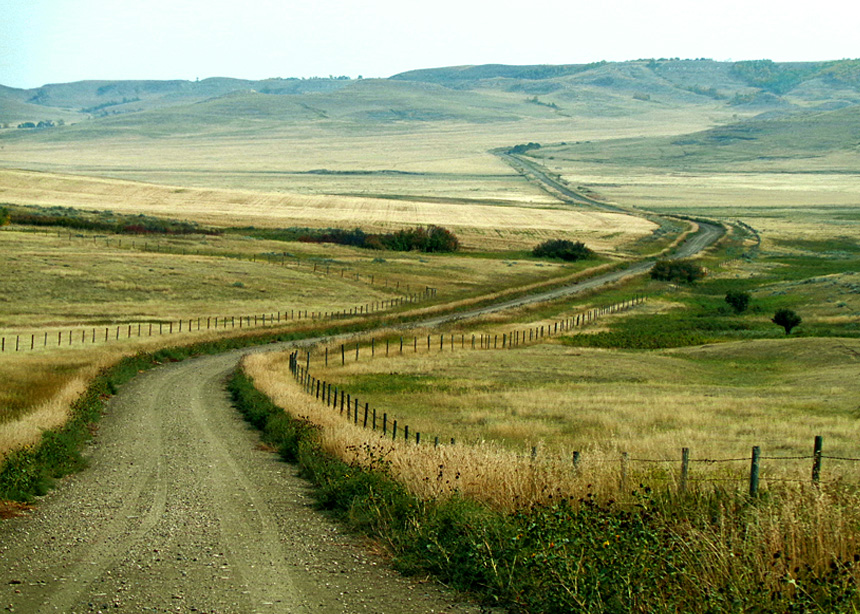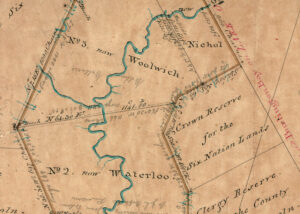First Nations in Saskatchewan are in conflict with the provincial government regarding the sale of Crown land.
Indigenous peoples in the province have treaty rights to use government-owned land for hunting, fishing and gathering. They also purchase Crown land to fulfill outstanding treaty land obligations.
As early as 2007, the provincial government started auctioning off Crown land to private owners, meaning that the land was no longer accessible to First Nations to use or purchase. First Nations were not given first right of refusal and sometimes they were not made aware of the auctions before the sales happened.
When Treaty Four and Treaty Six were signed in the 1870s, First Nations were guaranteed a certain amount of land based on the population of their band. Many band populations were improperly counted, and the bands were therefore given less land than they were legally owed.
Resulting land entitlement claims remain a live issue in Saskatchewan and elsewhere.
While First Nations made treaty with the federal government, the Natural Resources Transfer Act (NRTA) of 1930 transferred broad land responsibilities to the provincial government.
Passage of the NRTA was “an illegitimate move,” said Randy Klassen, Indigenous Neighbours coordinator for Mennonite Central Committee Saskatchewan.
The federal government was responsible for maintaining the treaties, but they gave broad jurisdiction over the land and resources—critical for treaty relations— to the province.
In 1992, the federal and provincial governments signed a historic land claims agreement with Saskatchewan First Nations. This was an attempt to make good on the land entitlement that First Nations were cheated of during the initial allotment in the 1870s.
“Based on the initial survey, our people had been shorted 30,000 acres,” said Doug Cuthand, a journalist, filmmaker and member of Little Pine First Nation.
“When the agreement was signed in 1992, our population had grown, so we were now entitled to 50,000 additional acres of land. Crown land played a huge role in terms of what was available for us to purchase.”
First Nations were awarded significant sums of money by the federal government to allow them to purchase the land to which they were entitled at fair market value. Many First Nations purchased land for economic development, ranching and cultural purposes.
But today, nearly all Saskatchewan First Nations’ land holdings fall short of their 1992 entitlement.
Over the past decade, Saskatchewan’s government has moved increasingly and rapidly toward the privatization of land.
Since the death of Colten Boushie, an Indigenous man who was fatally shot on a rural Saskatchewan farm by its owner in August 2016, the provincial government has passed legislation on trespassing and the Saskatchewan First Act, reinforcing the regime of provincial sovereignty over the land, Klassen said. “Saskatchewan has sold off the greatest amount of Crown land of all the provinces.”
For Cuthand, the conflict goes deeper than land rights; it’s about a fundamentally different understanding of land.
“This government has a very narrow understanding of economic development. You can’t build an economy in this day and age on just natural resource mining and agriculture,” he said. “As First Nations, we can bring a lot to the table. One of the big things happening in Indian Country is this cultural revitalization, resurrecting the culture.”
Cuthand added that this revitalization is good for the land, the environment and the economy, but First Nations need to be included in the decision-making process.
Still, there are signs of hope.
In summer 2023, the provincial government implemented a two-year pause on all land sale and lease auctions in order to update its First Nation and Métis Consultation Policy Framework (CPF).
A representative from the Ministry of Government Relations told Canadian Mennonite in an email that changes were made to the CPF, “which aims to support the Government of Saskatchewan’s objectives to advance reconciliation, drive economic activity for the benefit of all in Saskatchewan, and build meaningful and productive relationships between First Nation and Métis communities, government and proponents.”
Changes to the framework include a new duty-to-consult assessment chart to improve clarity for all parties.
“Timelines for government response have been shortened and consultation timelines for communities have been increased to support participation and reduce the need for extensions,” the representative said.








Leave a Reply
You must be logged in to post a comment.